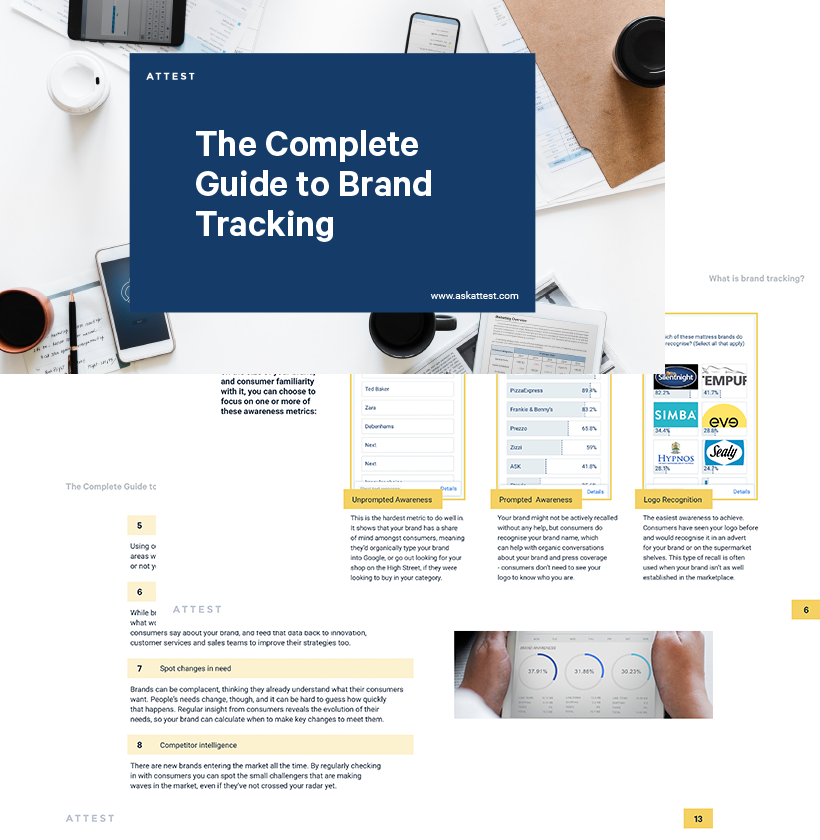The Impact of Brand on Digital and Performance Marketing

A data and evidence driven look at how brand impacts all areas of digital and performance marketing, including PPC, SEO, social media, conversion rates and retention.
A senior marketer at a well-known consumer startup recently told me that their performance marketing team just don’t believe brand metrics impact performance marketing. (They worked on brand marketing, so this was a source of serious frustration when looking for wider business buy-in about the importance of brand building).
The question is: are they right? Are performance marketing and brand marketing two completely siloed activities that have no impact on one another?
There’s a lot of evidence emerging that this isn’t the case, and that anyone serious about improving the results of their digital and performance marketing needs to get serious about brand.
Here’s why.
How Brand Impacts PPC
After crunching a lot of their own data, Larry Kim, the founder of WordStream (now CEO of Mobile Monkey), wrote a compelling argument about the importance of brand to the performance of PPC. Here’s one of the key sections:
His conclusion?
“If you see such a huge difference between your branded and non-branded keywords, it means you need to focus on building brand affinity even more. Go after users before they ever search for your stuff!
The success of campaigns that include queries without brand trademarks is largely based on the brand awareness and brand affinity of the products and services you’re promoting.”
How Brand Impacts SEO
SEMRush have completed a mammoth annual report on the factors that most influence organic search rankings, and here’s what they found are the most important:
As you can see, direct website visits is the #1 most important factor, outweighing even backlinks and referring domains.
Their conclusion?
“Building brand awareness is as important as putting efforts into SEO.” – SEMRush
They also state that “Organic rankings are not the only thing you should be concentrating on. Direct visits are fuelled by your brand awareness, so building a strong brand image should be an essential part of your promotion strategy.”
Another finding of their research was that branded keyword searches can still beat out sites with a ton of direct traffic. Says their report, “Branded keywords will always return more relevant but less popular websites on the first position.”
This means that if you can drive branded search terms by smart brand building, you can start to outcompete competitors with a much larger traffic footprint than you.
This chimes with the research of two well respected SEO experts Malcolm Slade of Epiphany and Tom Capper of Distilled, who independently presented the results of their research at BrightonSEO earlier this year.
Their main conclusion was the same – stronger brands perform better in organic search, even when they are less good at ‘traditional’ SEO tactics such as link building.
It’s worth reading their presentations if you’d like to learn more about their methodology:
Brand: The Only Future Ranking Factor – Malcolm Slade
Links & Rankings, The Story in the Data – Tom Capper
How Brand Impacts Social Media and Display
There are no definitive studies for these particular areas of performance marketing, but there is a simple way you can test the effects of brand awareness on click through rate (CTR) and conversion rates for yourself.
In Facebook, set up a ‘conversion’ goal campaign, then split out two audiences under ‘Ad sets’, with one focused on a customer audience, defined as anyone who’s engaged with a video (i.e. viewed it) for your brand within a set time period (more details on setting this up here), and the other focused on those who’ve never interacted with your brand before (a saved audience, excluding anyone who’s visited your website, existing customers, and the engaged audience you’re targeting in the first ad set).
Now see how your ads perform, and which gives you the best CTR, and ultimately which group converts best on your site (tracking this using the Facebook pixel, or Google Analytics).
You can use a similar methodology with other social and display networks, splitting the same creates or campaigns across audiences who have been exposed to your brand, and those who haven’t.
Of course, social media can also act as an initial form of brand awareness, with the impact then felt in other channels, which may not give due credit to the work you’ve done on social.
Buffer explains how you can track this:
How Brand Impacts Conversion Rates
Do people familiar with your brand convert at a higher rate than those who are new to you?
Common sense and data are at one here, with the results from our own Google Analytics dashboard illustrating the difference nicely.
That’s a nearly 70% differential.
Once you’re speaking to an audience that know who you are, there is a marked improvement in conversion rates.
So don’t worry if people don’t convert first time – count that interaction as an introduction to your brand and the promise of what you can do for your customers; assuming you provide a good experience and first impression, they’ll be back, and this is where the action happens.
How Brand Impacts Retention
Brian Balfour, former VP of Growth at Hubspot and now founder of Reforge, recently wrote a great post on the importance of retention for success.
And while his experience is in B2B, the principle applies equally to consumer brands.
Here’s a couple of examples he cites.
Of course, why these companies ultimately fell from grace is more nuanced than retention only, and the reasons for their poor retention cannot be solely pinned on a lack of focus on brand.
But they clearly missed some tell-tale signs that things weren’t right.
One of the leading indicators of your brand’s strength amongst existing customers is Net Promoter Score (NPS).
You might argue that revenue or repeat purchases trump a less bottom-line focused metric like NPS, but they’re both lagging indicators, while NPS is a much better leading indicator.
Revenue and repeat purchases can tell you that you have been doing a great job, but they might actually mask whether or not there’s something rotten in the kitchen.
Keeping a close on eye on your NPS will help give you a more forward looking idea of how happy customers are with you, and whether your brand experience is likely to lead to positive word-of-mouth, referrals and viral network effects that characterise many of the strongest companies.
This is how sustained success stories like Zappos, Warby Parker and Apple maintain their market share and brand dominance.
Conclusion
If you work in digital or performance marketing, you might think of brand building as the remit of another team who look at fluffy metrics that are less measurable than the trackable, metrics-driven world you inhabit.
Unfortunately, you’d be wrong.
Brand building is the responsibility of everyone, and will directly impact your performance and results. That’s not conjecture, it’s backed up by myriad data points, case studies and respected experts as detailed above.
If you’d like to apply the same kind of rigour to tracking your brand as you do to your digital and performance marketing, grab your free copy of our Complete Guide to Brand Tracking:
Tell us what you think of this article by leaving a comment on LinkedIn.
Or share it on:

